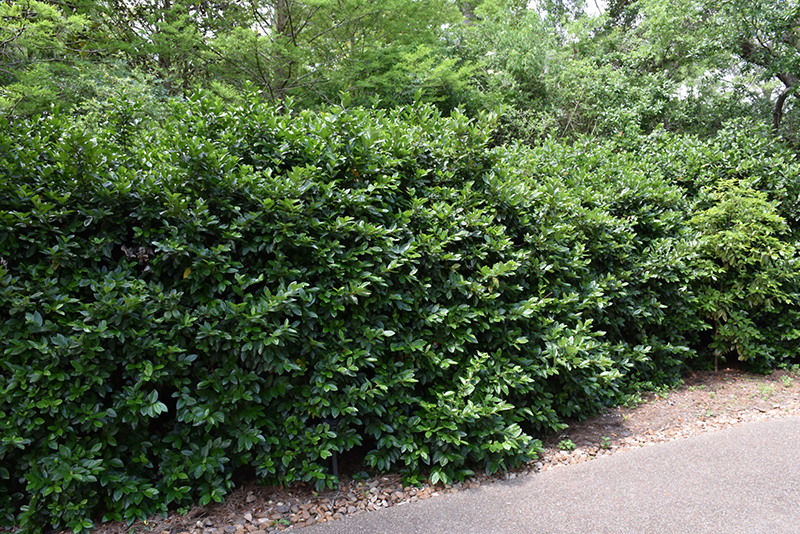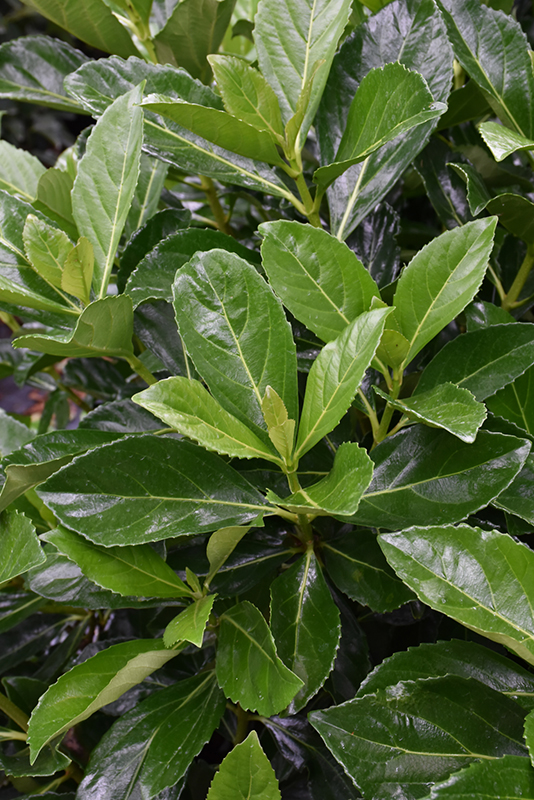Height: 12 feet
Spread: 8 feet
Sunlight:
![]()
![]()
Hardiness Zone: 6b
Description:
Shiny, deep green leaves that emerge copper is the main attraction; showy clusters of highly frangrant white flowers in spring; red berries which darken to black in summer; a great hedging or screening plant that requires little maintenance
Ornamental Features
Sweet Viburnum features showy fragrant white flat-top flowers at the ends of the branches in late spring. It has attractive dark green evergreen foliage which emerges coppery-bronze in spring. The glossy oval leaves are highly ornamental and remain dark green throughout the winter. The red fruits are held in abundance in spectacular clusters in mid summer.
Landscape Attributes
Sweet Viburnum is a multi-stemmed evergreen shrub with an upright spreading habit of growth. Its relatively coarse texture can be used to stand it apart from other landscape plants with finer foliage.
This is a relatively low maintenance shrub, and should only be pruned after flowering to avoid removing any of the current season's flowers. It is a good choice for attracting birds to your yard, but is not particularly attractive to deer who tend to leave it alone in favor of tastier treats. It has no significant negative characteristics.
Sweet Viburnum is recommended for the following landscape applications;
- Mass Planting
- Hedges/Screening
- General Garden Use
- Naturalizing And Woodland Gardens
Planting & Growing
Sweet Viburnum will grow to be about 12 feet tall at maturity, with a spread of 8 feet. It tends to fill out right to the ground and therefore doesn't necessarily require facer plants in front, and is suitable for planting under power lines. It grows at a medium rate, and under ideal conditions can be expected to live for 40 years or more. This variety requires a different selection of the same species growing nearby in order to set fruit.
This shrub does best in full sun to partial shade. It prefers to grow in average to moist conditions, and shouldn't be allowed to dry out. It may require supplemental watering during periods of drought or extended heat. It is not particular as to soil type or pH. It is highly tolerant of urban pollution and will even thrive in inner city environments. This species is not originally from North America.



